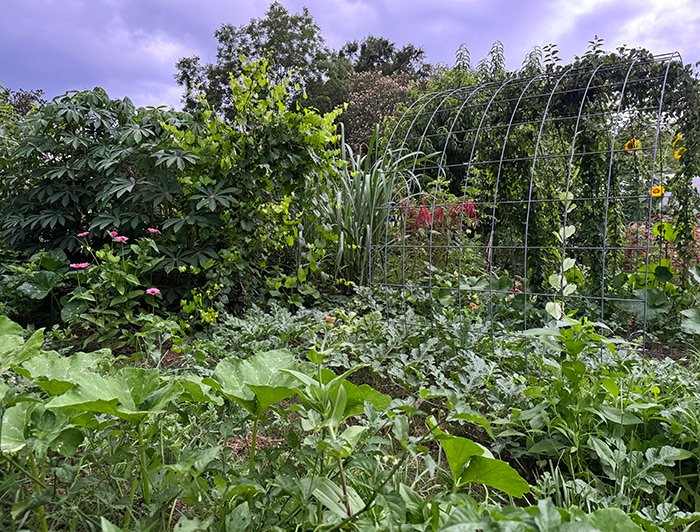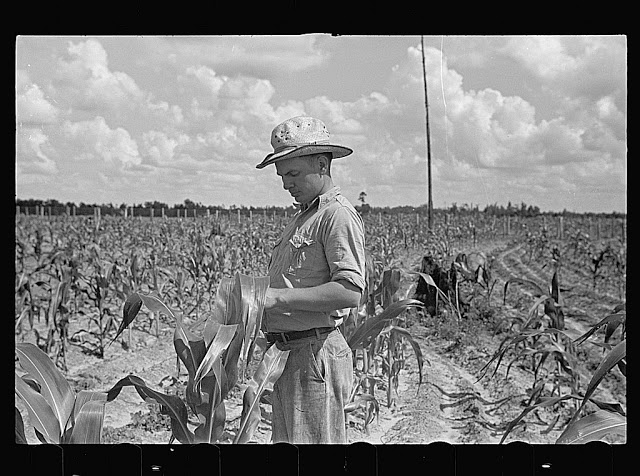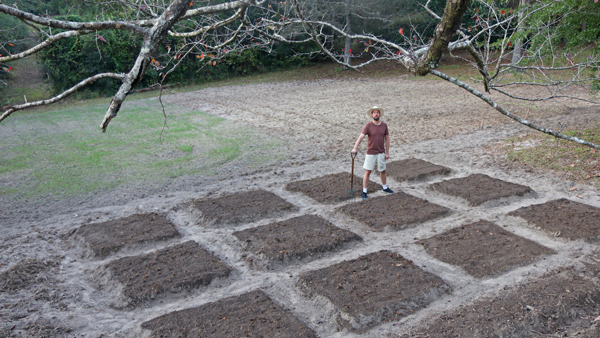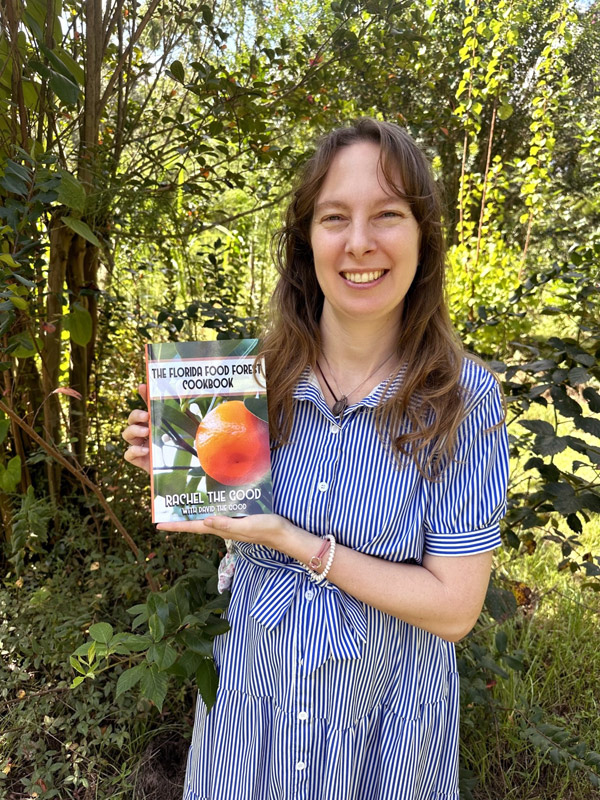Katherine writes:
“How would you recommend going about finding plants/varieties best suited for your climate?”
Our main gardening “secret” is that we focus on growing plants that love our backyard. This provides high yields for less work.

Not a lot of these plants are common garden varieties in the US. They’re WEIRD!
Cassava, malanga, Chinese yam, tropical pumpkin, mulberry, sugarcane, cucuzza, ube, white sweet potatoes… there are a lot of different plants out there that most Americans don’t know much about.
Yet they grow like weeds.
But finding those magical high-yield low-work plants takes some effort.
Here’s how we do it:
Grow Crops from Similar Climates
We looked at climates similar to ours in the growing season, then planted some of the vegetables they were known to grow.

Southeast Asia, Mexico, Caribbean, South America, The Mediterranean… those regions brought us a wealth of new things to try.
Don’t be afraid to try new things and learn some international recipes.
Research Historic Crops
Look at what was historically grown in your area. What did people eat back before everything was shipped in?

What did the natives eat? What was commercially successful?
Try growing those plants/varieties.
Do Backyard Science
Plant a lot of different heirloom seeds as a test, then not treat them all that well and see which ones survive.

Don’t be afraid to experiment, plant abundantly, cross types… and then save seeds from the survivors.
This is how to adapt plants to your yard and get stronger varieties that love your garden.
Talk to Other Gardeners
Talk to anyone in your area with a garden and ask “what’s easy to grow here?”
Pay Attention to Wild Species
Pay attention to wild species. Got wild grapes?
Plant cultivated varieties. Hickories? Their cousin pecan might also like your yard. Wild blueberries?

Plant some high-yielding commercial blueberry varieties!
We’ve tried all these things over the years and it’s been a big help.
This is a theme I keep coming back to. It’s at the heart of my popular book Totally Crazy Easy Florida Gardening.
Takeaway:
To avoid the need to work so hard, plant the plants that love your yard!
If you live in Florida, you might enjoy Rachel’s new Florida Florida Forest Cookbook, which shares how she prepares many of these exotic and delicious international roots, fruits and vegetables.



6 comments
Our big winners this year are Thai Soldier long beans.
Kiddos grimace every time I come in the house with another bundle of them. Green beans? *Again*?? (persecuted sighing)
hahahahaha
Try everything, even if others in your region could not grow it. I have a high failure rate but the failures become mulch. Eventually through trial and error I might find what loves my property. Usually it’s pests lol. Predator insects are making their way in. Seed saving helps too. I also have this stubborn weed called green amaranth that keeps coming up. I punished it by eating it. Not all of it, I am letting it seed.
Amen! Good attitude.
Congratulations on the cookbook Rachel!
I’ve been making your Florida Cranberry Relish for several years now… with a twist. I freeze the deseeded calyxes until I have enough for a big batch then once cooked, I freeze it in pint jars. Then throughout the year I thaw a jar and mix it with 2 blocks of cream cheese. It makes the most delicious dip on crackers or with celery! I have even made sandwiches with it. It’s sooo good and one of my most favorite things to grow, thanks to your recipe!
That is very cool – thank you.
Comments are closed.